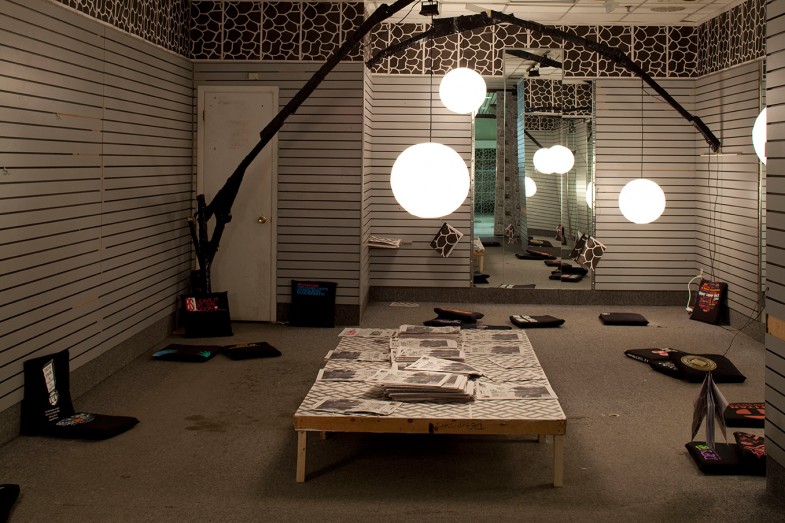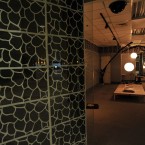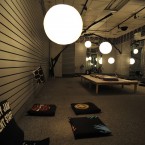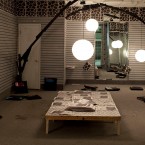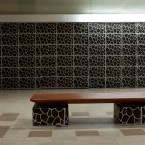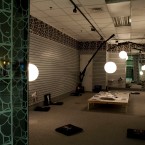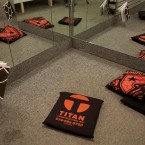Catastrophe ? Quelle Catastrophe ? – Manif d’art – The Québec City Biennial
Curator: Sylvie Fortin
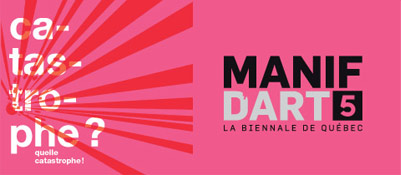
While catastrophe dominates the contemporary imaginary and mainstream media, its real work remains elusive. Its hypervisibility safeguards its foundational, requisite invisibility. Which is to say that the omnipresence of the catastrophic event acts as a smokescreen, ensuring the very invisibility of catastrophe’s real work. Politically, the catastrophic event is used to legitimize the enactment of states of exception. But in recent years, catastrophe has also been put to preemptive use. We no longer need a catastrophe to be subjected to the logic of catastrophe. As such, its temporality has shifted, its operational terrain expanded to the entirety of time and space. So much so that catastrophe has become the condition of contemporary life. If, in the midst of WWII, Walter Benjamin could define history as “one single catastrophe which keeps piling wreckage,” Slavoj Zizek has recently demonstrated that catastrophe has expanded to the future, “the true catastrophe already is this life under the shadow of the permanent threat of catastrophe.” Daily life is now the playground of low-level, yet dreary, incessant, inescapable, catastrophe. It is also the theater of exception where democracy and equality are reduced to mere form.
Once the climax of Greek plays and poems, catastrophe is now the wallpaper of our daily lives, the score of our everyday drama. But the concept of catastrophe operates in an expanded sphere, which includes mathematics and biology, in addition to literature and theory.
This project will bring together new and recent art work from artists working around the world in order to discern and present strategies of resistance to the wreckage of catastrophe’s slow, incessant, non-spectacular work. In order to do so, it will deploy a number of complementary platforms over an extended period of time–working groups, conferences, publications, exhibitions, screenings, performances, as well as an online seminar.
PARTICIPATING ARTISTS
Patrick Altman (Québec City, Canada); Salvatore Arancio (London, UK); Bill Burns (Toronto, Canada); Luca Buvoli (New York, USA); Cooke-Sasseville (Québec City, Canada); Doyon/Demers (Québec City, Canada); Sarah Emerson (Atlanta, USA); Carole Epp (Saskatoon, Canada); Brendan Fernandes (Toronto, Canada / New York, USA); Amélie-Laurence Fortin (Québec City, Canada); Laurent Grasso (Paris, France); Johan Grimonprez (Brussels, Belgium / New York, USA); Milutin Gubash (Montreal, Canada); Hadley+Maxwell (Vancouver, Canada / Berlin, Germany); Maryam Jafri (Copenhagen, Denmark); Gwen MacGregor (Toronto, Canada); Lynne Marsh (Montreal, Canada / Berlin, Germany / London, UK); Daniel Joseph Martinez (Los Angeles, USA); Michael Jones McKean (Richmond, USA); Gean Moreno (Miami, USA); Ahmet Ögüt (Istanbul, Turkey / Amsterdam, The Netherlands); Ernesto Oroza (Miami, USA); Iván Navarro (New York, USA); Trevor Paglen (Berkeley, USA); Christodoulos Panayiotou (Cyprus); Gwendoline Robin (Brussels, Belgium); Samuel Roy-Bois (Vancouver, Canada); Lindsay Seers (London, UK); SUPERFLEX (Copenhagen, Denmark); Katherine Taylor (Atlanta, USA); Myriam Yates (Lennoxville, Canada)
A finalized list of artists will be released in early April 2010
Catastrophe? Quelle catastrophe! We all live in a catastrophic world!
The project will delve into a number of questions, which will concomitantly refine the notion of catastrophe and pressure visual arts’ foundational concepts:
1. Imaging catastrophe / Image as catastrophe / The catastrophic image
2. The time of catastrophe / catastrophe’s temporalities
3. Catastrophic Space / space of catastrophe / spatializing catastrophe
4. Performing the catastrophic / performance as catastrophe / theater of catastrophe
5. Catastrophic matter / catastrophe’s residue
- photo-Javier-Flores-Cruz
- photo-Javier-Flores-Cruz
- photo-Ivan-Binet
- photo-Ivan-Binet
- photo-Ivan-Binet
- photo-Ivan-Binet
